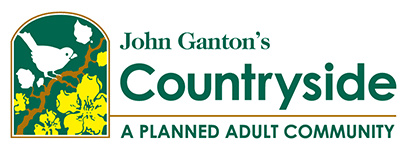Feeling anxious is a normal part of life. From our first day of kindergarten to our first date to starting a new job, we have all felt a little anxious, afraid or unsure of ourselves. As we age, however, anxiety can creep into our lives causing undue stress and worry. When worrying becomes disproportionate to reality, it can mean an anxiety disorder is developing.
In older adults, anxiety can be a result of medical conditions, medications, substance abuse, chronic pain, loss of a friend or loved one, or other complicating factors like moving to assisted living or long-term care. Although anxiety can be confused with depression — and can even be present in addition to depression — understanding and recognizing different anxiety disorders can help speed diagnosis and treatment.
Generalized anxiety disorder or GAD: According to the Anxiety and Depressions Association of America, every year in the United States, 6.8 million people are affected by GAD. Although more common in childhood and middle age, GAD starts slowly and results in a person being unable to control their worry, even when there appears to be little or nothing to worry about. Symptoms of GAD include the inability to control worry, the need to control situations, headaches and nausea, avoiding situations that worry them, and eventually, problems performing simple life activities.
Acute stress disorder: Exposure to a traumatic event, like witnessing an accident or death, can trigger acute stress disorder. Characterized by severe anxiety lasting three days to not more than four weeks, symptoms can include detachment from reality, avoiding reminders of the trauma, and hyperarousal, commonly associated with the more commonly known post-traumatic stress disorder. The Psychology Today article, “Acute Stress Disorder” provides a concise overview of the disorder to help you recognize it and understand treatment options.
Post-traumatic stress disorder: Similar to acute stress disorder, PTSD occurs after a trauma (including active duty military assignments, natural disasters and even the loss of a loved one) and can be very debilitating. The difference between the two is that PTSD lasts longer than four weeks and left untreated, can last a lifetime. PTSD symptoms can include flashbacks, nightmares, frightening thoughts, and anger. Someone with PTSD may also experience mood swings, may have difficulty participating in everyday life, and can have feelings of alienation and guilt.
With all of the media coverage of PTSD among veterans, it might be easy dismiss symptoms not associated with military service, and the National Center for PTSD notes, “About 6 of every 10 men (or 60%) and 5 of every 10 women (or 50%) experience at least one trauma in their lives. Women are more likely to experience sexual assault and child sexual abuse. Men are more likely to experience accidents, physical assault, combat, disaster, or to witness death or injury.” For more about PTSD and treatment options, go to the National Center for PTSD.
Panic disorder: Panic is a normal reaction to threatening circumstances, but panic disorder is an unprovoked sense of pending disaster that can be totally debilitating. Although women are twice as likely to experience panic attacks, approximately 2-3 percent of the population are affected. Panic attacks are unexpected and occur suddenly, causing a wide range of physical and mental symptoms from sweating and heart palpitations to nausea and dizziness to fear of death. A complicating factor with panic disorder is agoraphobia, which is the avoidance of places and situations where panic attacks have occurred. In advanced cases, people can refuse to leave the perceived safety of their home, becoming reclusive and isolated. The ADAA offers an informative pamphlet on panic disorders that describes symptoms, causes and treatments, as well as where to get help.
Obsessive-compulsive disorder: Everyone knows someone they consider a little over the top when it comes to keeping house, having a spotless car, or always being perfectly put together even for a trip to the grocery store. We might even consider them a little obsessive. But obsessive-compulsive disorder or OCD goes several steps further. Simply put, people with this disorder fear certain things and develop compulsive ways of avoiding or dealing with them. Among the more familiar examples are Adrian Monk in the TV show “Monk” who has a number of fears including germs and crowds (so he avoids all touching) and Sheldon Cooper in the “The Big Bang Theory” who takes personal hygiene to an all new level and creates daily rituals that govern his life.
OCD can manifest in constant and repetitive actions such as hand washing until the skin is raw, an overwhelming need for order in all things, and nagging doubts about whether or not you actually did something like lock the door when you left home. Other OCD symptoms to watch for include following the same strict routines, silent repetition of words or phrases, counting in patterns, checking and rechecking, and arranging and rearranging items so they are all perfectly aligned, like canned goods or nick-knacks on a shelf. Obsessive-compulsive disorder most often begins earlier in life, so by the time a person reaches their senior years, it can become disabling. If you suspect OCD, treatments are available to help manage the disorder and take back your life. The International OCD Foundation article, “What are the Most Effective Treatments for OCD?” explains the latest science and offers a wealth of resources.
Phobias: If you cannot go near the windows in a high-rise building or cannot imagine ever giving a speech without passing out cold, you may think you have a phobia. According to the Mayo Clinic, a phobia is “an overwhelming and unreasonable fear of objects or situations that pose little real danger but provoke anxiety and avoidance.” Unlike a short-term fear, such as that experienced before an exam or a dentist appointment, a phobia is a long-term affliction that can actually force you to make life-altering changes. Symptoms associated with phobias include fear, anxiety and panic; feeling powerless even though you know your reaction is irrational; physical reactions similar to panic attacks; and avoidance of situations and circumstances that may involve your phobia. Phobias can also be caused traumatic and other negative events. To learn more about phobias and treatments available, check out the MedinePlus article, “Phobia – simple/specific.”
Whether you know you have an anxiety disorder, or just think you might, the best course of action is to talk to your physician. The sooner you get help, the sooner you can enjoy living life to the fullest again!
For information about Countryside, call Margaret Nagel at (517) 206-5000 or download our brochure to learn about our care levels, cost, and amenities.


